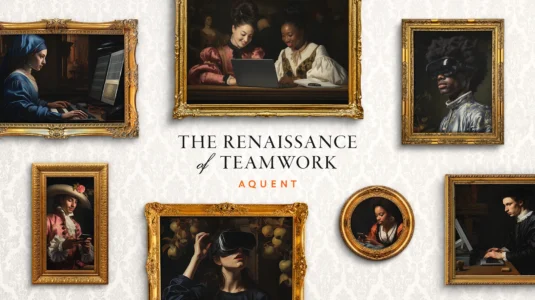

Key Takeaways
- Candidates should prepare by testing software and equipment, arranging lighting, and minimizing distractions.
- Professional dress and eye contact are just as important in video interviews.
- Candidates should avoid multitasking and come prepared with questions.
You’ve undoubtedly noticed by now that the world of work has changed. Perhaps forever. The rise of the remote workplace has brought with it shorter commutes (from the bedroom to the dining room), casual Mondays through Fridays, and the remote interview. The last being very welcome news if you don’t like ironing interview clothes, searching for parking spaces, and nervously sitting beside five other candidates outside a human resources office.
Remote interviews (also called video interviews) aren’t going away. At least during the initial stages of hiring, they’ve become a more efficient process for both the company and for candidates.
But before you wear your sweatpants to your next one, you’ll want to follow our rules for success. We asked a few of our top Recruiters to give us their best video interview tips so you can get the most out of your next online interview.
Prepare for technical difficulties
There’s a reason every Broadway and Hollywood production has a Tech Rehearsal— something can always go wrong. A video interview is no different as they rely on a lot of tech. As Creative Talent Agent Greg Ceneviva told NBC12 during a recent interview, you just need to plan ahead. “I encourage candidates the day before an interview to get on their computer.” He suggests:
- Making sure the software is up to date, including whatever video conferencing platform the interviewer is using (Zoom, Google Hangouts, Skype)
- Ensuring both the microphone and camera work properly
- Arranging the lighting to avoid shadows on your face and help you look your best
You’ll also want to arrive early to the “room.” Five minutes is more than enough time.
Set up a distraction-free conversation
Sometimes we can actually forget we’re on video while we’re on video. Even though it’s harder to do when there are only two people in the meeting (instead of 20), you need to think of how you’re presenting yourself and your background.
Gina Bottone, our internal Recruiter covering the U.S. and Canada, advises, “Be in a professional-looking setting whenever possible. Be in a quiet room with little distraction. Don't have the TV on.” You want your interviewer to take you—and this role—seriously.
It should be obvious, but you should tell whoever you may be living with that you have an interview and should not be interrupted. Everyone who has been on a Zoom call understands there are some things that will just happen—say a cat or a toddler wanders through—try your best to ensure everything goes well.
As an action plan, prep your video screen before the call and see what your background looks like. Both Zoom and Google will let you blur your background and offer colorful options (like a fake office), but the best background for a video interview is one that keeps you looking professional.
Be authentic and focused
Greg’s advice is to make sure you are authentic during the call. “One of the biggest mistakes that people make during a virtual interview is forgetting that there’s a real person on the other side of the screen.”
Always strive to make a connection as if you were speaking in person. This means you need to make eye contact and follow normal social cues. Gina added that the worst thing a candidate can do is to be “sitting on the couch and looking very relaxed, like they are not on an important call.” The last thing you want is for the hiring manager to believe you’re disinterested.
On that note, all our Recruiters cautioned that you should never multitask during an interview. It comes off as a red flag. The takeaway is that not only are you not interested in the position, but also that you don’t value their time.
Dress for the role
Dallas Sr. Recruiter and Talent Agent George Strippoli breaks it down like this: “Treat it like a real interview, because it is. Minimize distractions, dress professionally, and ask questions. This is going to be the impression the hiring manager has of you.” His point is that even though you are doing this from the comfort of your own home, if you fail to take video interviews seriously, you will, well, fail.
And while we’re not going to tell you what to wear for a video interview, we can let you know that you should dress in something you’d normally wear to work (which means no sweatpants). You want to look and feel the part. It’s not only your first impression of the hiring manager and the company—but it’s also their first impression of you.
Here’s a tip that applies only to interviewing on video: Avoid wearing busy patterns and stripes, which can create strobe-like, wavy lines. They’ll be a distraction to your interviewer.
Be prepared to ask questions
Just as in an in-person interview, you’ll want to make sure you have questions for your interviewer. The good thing about video interviewing is that you can have them written down, just out of sight of the camera. Here’s a few good ones to start with: “What does success look like for you?” and “What was the best feedback you ever gave to someone on your team?”
With remote work, asking questions may actually be more important, since you will not be walking through the office space and meeting the team at the end of your interview. Consider asking, “How does the team work together if they are all remote?” and “What technology do you use to manage projects?”
Spend time practicing
Though video interviews are a relatively recent development, they’re here to stay. They aren’t too difficult to do, but there is a learning curve. You’ll want to spend a little time working to hone your video interview technique. Actors only look natural on camera because they’ve spent hundreds, if not thousands, of hours trying to look natural.
Greg put it best, “With a little bit of practice and a little bit of time spent with the technology, these are things that are learnable for most candidates, no matter where they are in their career.”
Related

Three tips for energy leaders to manage the talent transition.
Managing & Leading Teams, Marketing & Creative, Recruiting & Hiring, Oil and Gas

Ways to eliminate bias in recruitment using tech.
Diversity, Equity & Inclusion

Soaring beauty sales are now in airport pop-ups.
Marketing & Creative, Beauty and Fashion

